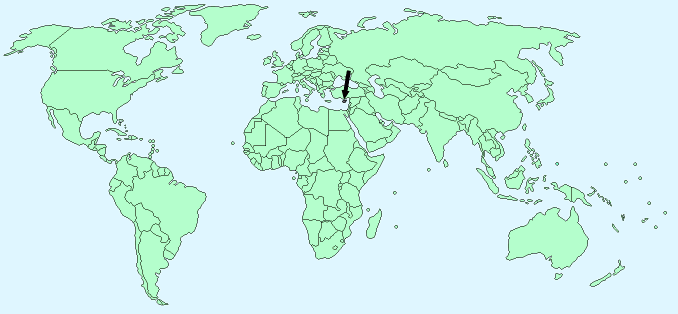Cyprus


Continent – Europe
Region – Central Europe
Size – 9,250 km²
Geography – central plains, mountains in north and south
Language – Greek, Turkish, English
Religion – 78% Greek Orthodox, 18% Muslim, 4% other
Monetary Unit – Euro
Natural Resources – copper, pyrites, asbestos, gypsum, timber, salt, marble, clay earth pigment
Agriculture – citrus, vegetables, barley, grapes, olives, vegetables; poultry, pork, lamb; dairy, cheese
Industry – tourism, food and beverage processing, cement and gypsum production, ship repair and refurbishment, textiles, light chemicals, metal products, wood, paper, stone, and clay products

Neighbouring Countries – none
Population – 1,172,458 (2014 estimate)
Population Growth Rate – 0.52%
Average Life Expectancy – 77.9
Capital City – Nicosia (313,400)
Highest Mountain – Mount Olympus (1951m)
Longest River – no major rivers
Climate – mediterranean, hot, dry summers 18°C to 37°C and cool winters 5°C to 19°C
Yearly Rainfall – 35 cm (approx) mostly October to March
Plant Life – pine, conifers, cypress, juniper, plane, alder, dwarf oak, wild flowers, herbs
Animal Life – moufflon, bats
Bird Life – partridge, quail, snipe, plover, woodcock, eagle
Harvard Reference for this page:
Heather Y Wheeler. (2015). Cyprus. Available: https://www.naturalhistoryonthenet.com/Facts_Figures/Country_Facts/cyprus.htm. Last accessed Monday, July 18, 2016
Facts and Figures Pages
